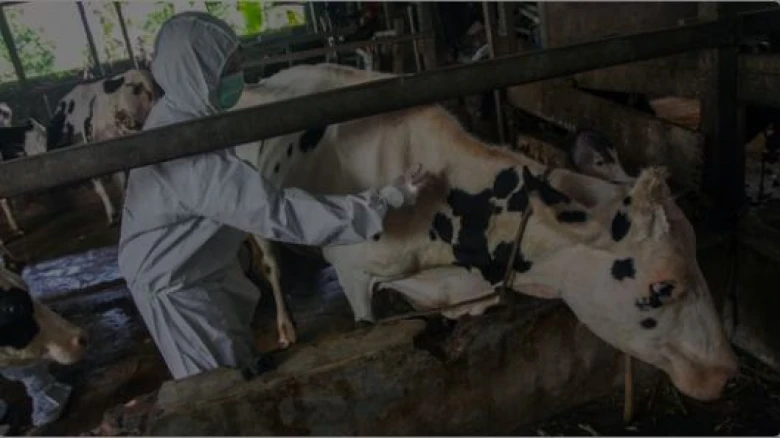International

Digital Desk: After traces of the
virus were discovered on imported animal goods, Australia is on high alert for
the presence of the disease in its cow herds. The illness is already ravaging
Indonesia and is rapidly approaching paddocks in Australia, where an epidemic
could be catastrophic for the livestock sector, the economy, and global meat
supplies.
What is
foot-and-mouth?
Cattle, sheep, goats, and pigs are
all susceptible to the extremely contagious virus known as foot-and-mouth
disease (FMD). Fever and blister-like lesions on the tongue, lips, mouth,
teats, and between the hooves are its primary symptoms. Herds could be wiped
out due to the disease's frequency.
Humans frequently transfer the
sickness through their shoes, clothes, and luggage, and particles can even live
for up to 24 hours in people's noses. The virus can live in the environment for
several weeks and be spread through tainted meat and other animal products. It
is regarded as one of the most significant livestock diseases in the world and
has the potential to result in annual losses of several billions of dollars.
Can people get it?
Even though the virus, which belongs
to the Picornaviridae family, is related to those that cause polio, hepatitis
A, and the common cold, foot-and-mouth disease seldom and ineffectively infects
humans. It shouldn't be mistaken with the human disease that causes fever,
rash, and hand, foot, and mouth. This unrelated condition is most frequently
mild and affects youngsters. It is brought on by several viruses, primarily
coxsackie A and enterovirus 71.
Where is
it currently a problem?
According
to the World Organization for Animal Health, the illness is prevalent
throughout much of Africa, the Middle East, and much of Asia. Since Indonesia
first reported the illness in May and the virus expanded throughout the
country's cow herds, there is currently rising concern about its spread there.
The spread
of the virus, which has reached the popular tourist destination of Bali, has
particularly frightened neighbouring countries like Australia. Thousands of
Australians visit the island for vacation each month and return home. New
Zealand, which has a sizable population of animals, is likewise on high alert.
What's happening?
In order to stop the spread there,
Australia has volunteered to pay for one million vaccines in Indonesia. Within
its own borders, Australia has also stepped up surveillance and
countermeasures, such as educational videos and sanitary foot mats at airports.
Officials have resisted calls from some legislators to suspend travel to
Indonesia, who have gone even farther.
Murray Watt, the agriculture
minister, claims that the threat of incursion is greatest with regard to
imported animal products. Although the test did not reveal a live virus, traces
of the disease were discovered in a sample of pork floss that was being sold in
Melbourne.
Is the world's supply of beef in
danger?
The A$32 billion ($22 billion)
livestock economy in Australia would be seriously threatened by an epidemic of
the disease, and a widespread occurrence may have an estimated A$80 billion in
direct economic effects.
Although only 4% of the world's beef
is produced there, Australia is a major exporter, making up around 13% of all
exports. A possible outcome of an outbreak is the slaughter of animals,
depending on the potential spread.
Both actions might significantly reduce Australian export
quantities, with the biggest effects possibly being felt in China, Japan, and
South Korea. A widespread epidemic would damage Australia's export standing,
with consequences that would last for years after the affected animal herds
have recovered.
of sheep and animals in order to contain foot-and-mouth. The agricultural and
food industries suffered significant financial losses that were thought to have
topped 3 billion pounds at the time. The outbreak led to limits on the nation's
meat exports and limited visitor access to the countryside.
Leave A Comment